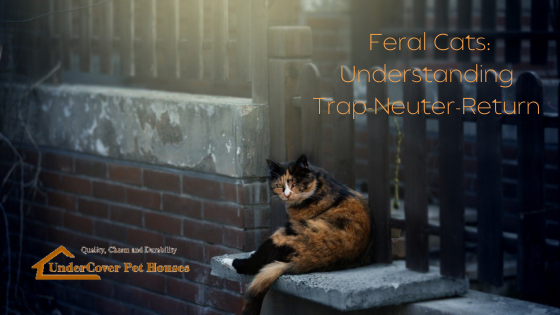 Loading... Please wait...
Loading... Please wait...Understanding TNR: The Lifeline for Feral Cats
Posted by Danny MacDonald on 2023 May 31st

Let’s start by answering—what exactly is TNR?
TNR in full stands for (Trap-Neuter-Return) It’s an approach by animal rescue organizations and volunteers across the globe to manage feral cat populations.
The procedure involves three main steps:
- 1.Trapping the feral cats in a safe manner.
- 2.Neutering or spaying them to prevent future litter.
- 3.Returning the cats to their original habitat.
The TNR Process: An In-Depth Overview
- Trap: As captured above, trapping is the initial step in the TNR process. It is often carried out using humane traps that cause no harm or threat to the cats. Usually, volunteers bait the traps with food and monitor them until a feral cat is caught.
- Neuter: The captured feral cat (s) is then taken to a vet or a spay/neuter clinic. The cat (s) receive necessary medical treatments like essential vaccinations or wound care on top spaying or neutering.
- Return: After recovery, the feral cats are returned to their original shelters or outdoor homes which is necessary for their survival.
Why is TNR for Feral Cats Important?
TNR is crucial for feral cats for several reasons:
- 1.Population control
With numerous cats roaming the streets, overpopulation is a major issue. TNR helps in controlling this mushrooming feral ca population by preventing more kittens from being born outdoors.
- 2.Improved health
Neutering or spaying cats helps them lead healthier and longer lives. It also helps them not to contract diseases as well as prevents behaviors associated with mating, such as cat fights, aggression or yowling.
- 3.Stability in cat Colonies
When feral cats are removed permanently, new cats move in to take advantage of the available resources. This is referred to as the "vacuum effect".
As such, TNR helps maintain robust, stable, controlled colonies, avoiding the vacuum effect problem.
TNR in Action: A Real-Life Example
To understand the effects of TNR in a community, let's consider a case in Austin, Texas.
In the span of one year, community volunteers implemented a TNR program in a community with a colony comprising 25 feral cats. The cats were safely trapped, spayed, and then returned to their colony.
The following year, not a kitten was born in this colony. This demonstrates TNR effectiveness in managing feral cat populations. Residents reported minimized noise, as mating behaviors ceased, and cats appeared healthier.
Bottom Line
TNR is a proven and humane approach to help manage and reduce the feral cat population communities.
By promoting TNR programs in local communities. We can ensure a safer environments and healthier life for these wild felines that share our neighborhoods.
